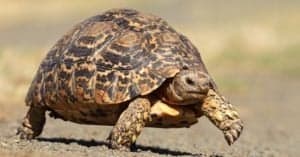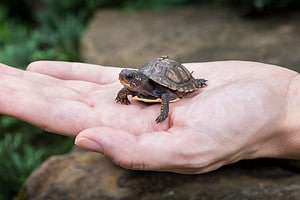Tortoises belong to the family Testudinidae. While all tortoises are turtles, not all turtles are tortoises. They range in size from just a few inches to nearly 4 feet long and can weigh up to several hundred pounds. Tortoises feature prominently in many cultural legends and myths, most notably in the story of the tortoise and hare. You can find them in many different environments and regions around the world except for Australasia and Antarctica. Here is a list of 10 incredible tortoise facts that demonstrate why tortoises are so amazing.

10. Charles Darwin and Steve Irwin Took Care of the Same Tortoise
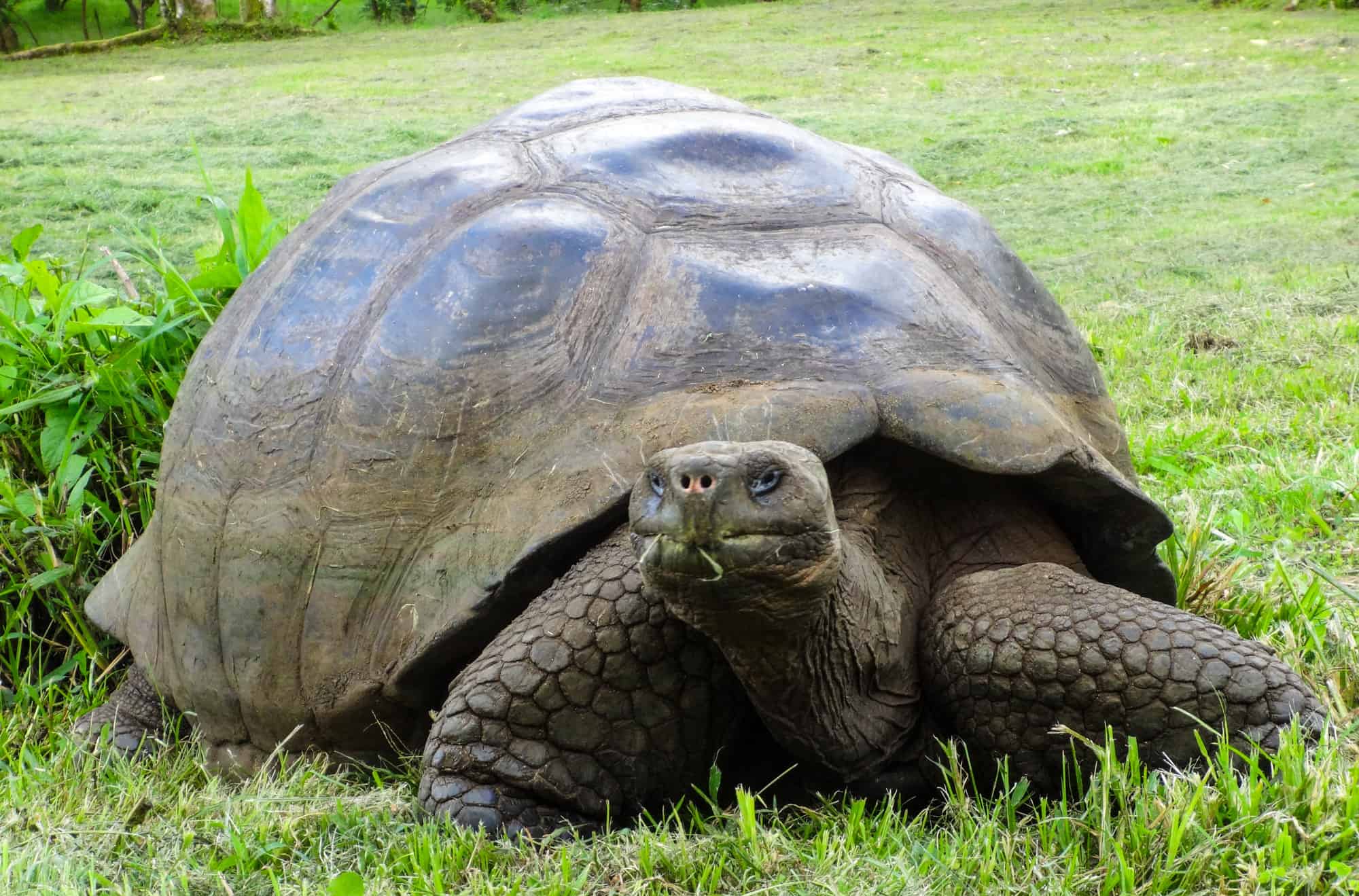
Harriet (c. 1830 – June 23, 2006) was a Galápagos tortoise (Geochelone elephantopus porteri) who had an estimated age of 175 years at the time of her death in Australia.
©iStock.com/Lisa Seeto
It might sound ridiculous, but you just read the statement above correctly. Harriet was a Galápagos tortoise collected by Charles Darwin during his 1835 expedition around the world aboard the HMS Beagle. She spent several years in England until she was eventually moved to Australia where she spent the rest of her days.
For years people thought she was male, as a tortoise’s gender is extremely difficult to identify. Eventually, she found her way to the Australia Zoo where she remained under the watchful care of Steve Irwin. Although we’ll never know Harriet’s exact age, researchers estimate she was born between 1825 and 1832. That means that at the time of her death on June 23, 2006, Harriet measured around 175 years old, which makes her one of the oldest tortoises ever known.
9. Tortoises Can’t Swim
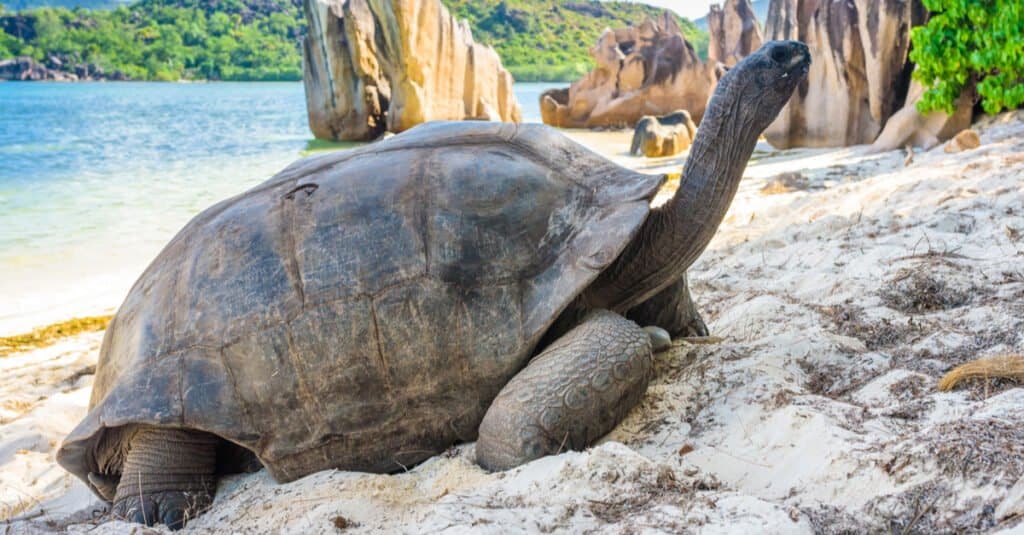
Tortoises cannot swim due to their heavy legs, large bulky shells, and flat feet.
©Jan Bures/Shutterstock.com
Unlike aquatic turtles and terrapins, which adapted to live in water, tortoises adapted to live on land. As a result, while turtles and terrapins can both swim, tortoises cannot. Several adaptations explain why tortoises lack the ability to swim.
While sea and freshwater turtles have flippers and terrapins have webbed feet, tortoises possess flat front feet and massive hind feet. They evolved short, strong legs to help them hold their giant shells and to move around on land. Their strong legs and hard feet also help them to dig burrows in the ground. Additionally, tortoises have heavy, bulky shells compared to the streamlined, aerodynamic shells of fresh and seawater turtles. Tortoise shells simply aren’t designed to glide through the water and instead excel at providing protection on land.
8. Tortoises Have an Exoskeleton and an Endoskeleton

Tortoises have both an endoskeleton and an exoskeleton.
©Lost Pirate/Shutterstock.com
Animals with an exoskeleton grow an external skeleton that supports and protects the body. Meanwhile, animals with an endoskeleton have an internal skeleton. Mammals, birds, fish, amphibians, and reptiles mostly possess an endoskeleton, while invertebrates like insects, spiders, and crabs have exoskeletons. However, turtles represent one of the few animals that feature both!
The skeleton of a tortoise contains both an endoskeleton, which contains its internal bones, and an exoskeleton, made up of the carapace and plastron. The carapace makes up the top part of the shell while the bottom part is called the plastron. A bridge fuses these pieces together, effectively connecting the parts of the exoskeleton together.
7. Tortoises Inspired the Roman Military
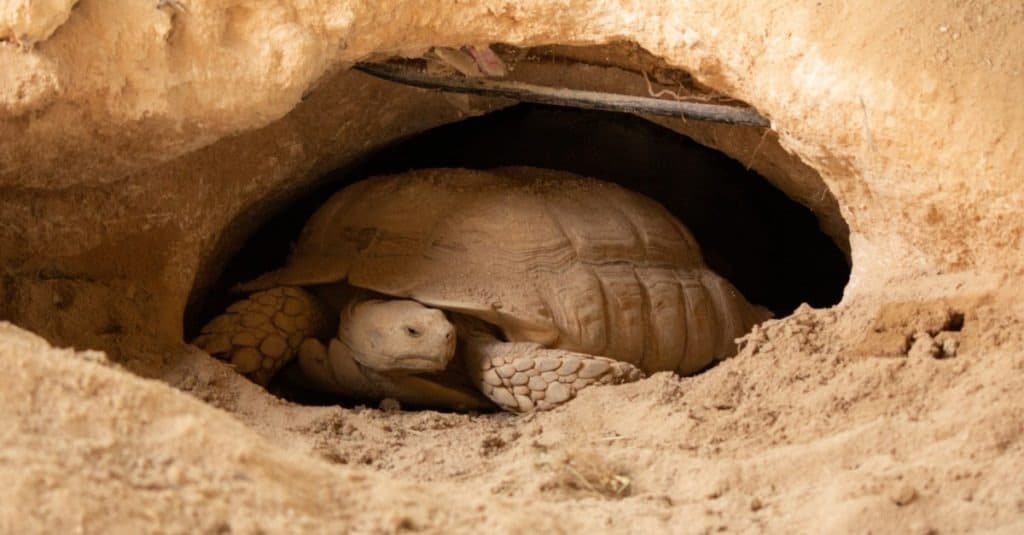
The Roman military drew inspiration for its battle tactics from the tortoise.
©SLSK Photography/Shutterstock.com
The Roman military was one of the premier fighting forces the world has ever seen. With its legions of well-trained troops, Rome was able to conquer most of the Mediterranean region and much of Europe. Roman generals were brilliant tacticians and drew inspiration from many successful generals of the past. They were also influenced by tortoises.
The testudo is an iconic Roman shield wall formation that involved soldiers standing in a tight group with shields held in front and on top. Roman soldiers used the testudo as a defensive maneuver to reduce casualties from missile fire. In terms of appearance, the testudo resembles the shell of a tortoise. In fact, the Latin word testudo translates to tortoise in English.
6. A Group of Tortoises Is Known as a Creep

A group of tortoises is known as a creep.
©Muhammad Mahdi Karim / Creative Commons – License
The term for a group of animals varies depending on the species. The collective noun that defines a particular group of animals can sometimes tell us a lot about those creatures. For example, a group of crocodiles is called a bask, which makes sense given their habit of laying in the sun. Meanwhile, a group of crows is known as a murder, which again stands to reason due to the crow’s historical association with death. As for the tortoise, a group of tortoises is known as a creep. Given the fact that tortoises are infamously slow-footed, there’s likely no better collective noun that could have been chosen.
5. Tortoises Are Exceptionally Long-Lived
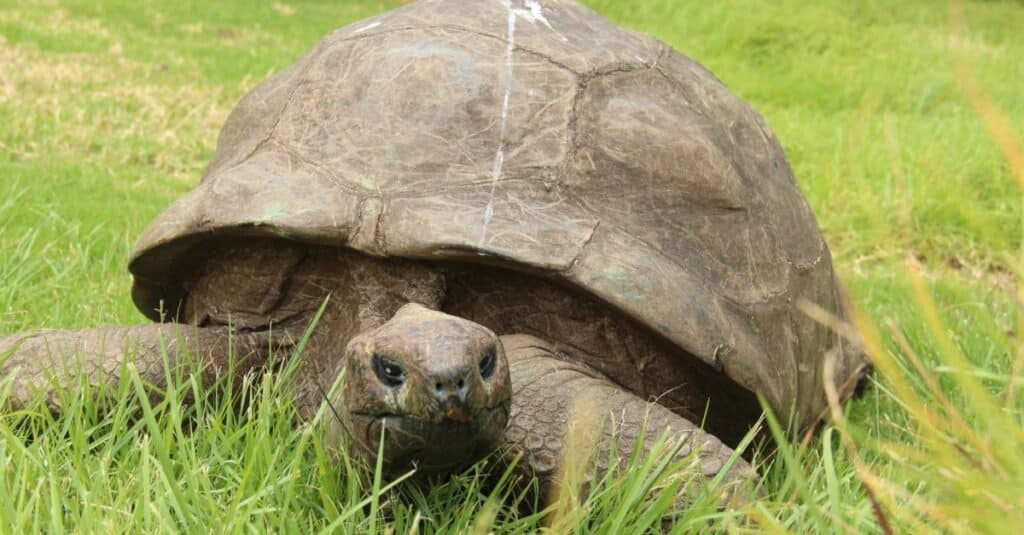
Jonathan, a Seychelles giant tortoise, and possibly the oldest animal alive, on the grounds of Plantation House on St Helena.
©Snapper Nick/Shutterstock.com
By this point, it should be readily obvious that tortoises can live for a long time. We already mentioned one tortoise named Harriet that researchers believe lived to be around 175 years old. Overall, tortoises just do things slower than most other animals. They have an extended reproduction cycle and don’t reach sexual maturity for years. Additionally, they have slow metabolisms, tough shells to protect themselves, and tend to live in more isolated environments.
It’s therefore no surprise that tortoises can live for a few hundred years. One tortoise named Jonathan recently became the oldest living animal on Earth. Scientists believe the geriatric Seychelles giant tortoise was born in 1832, which would make him nearly 190 years old. If true, that means he beat out the previous record-holder, a radiated tortoise named Tu’i Malila who lived nearly 188 years.
4. Tortoises Smell Using Their Throats
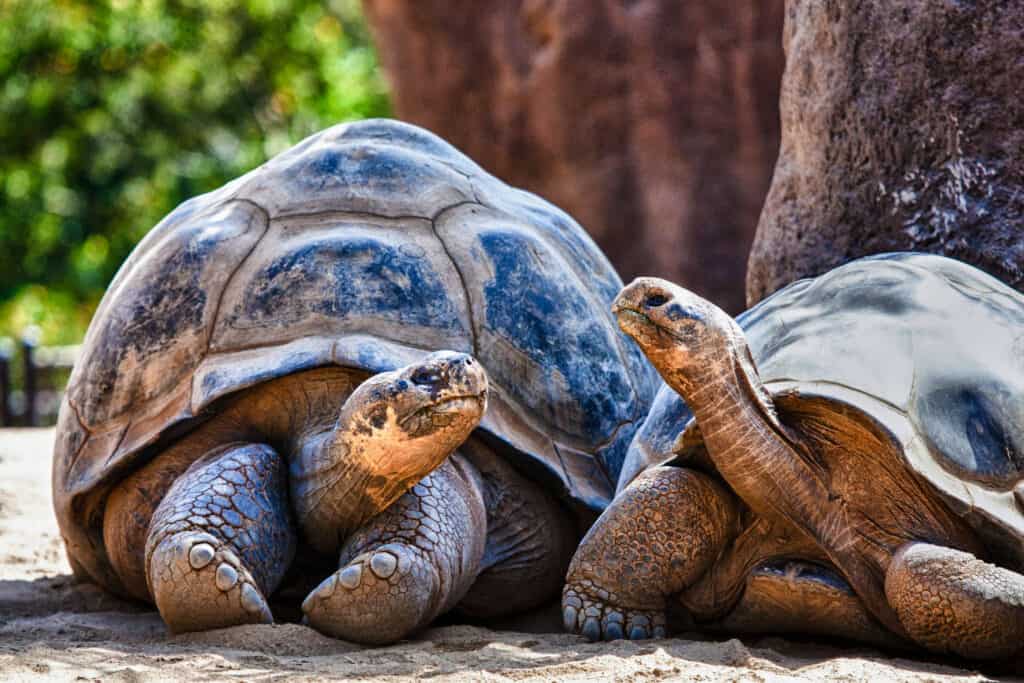
Tortoises smell using the vomeronasal organ in their mouth.
©iStock.com/paulacobleigh
We typically think of smell as being associated with the nose, and for many animals, this is the case. However, some animals possess another organ that can help them detect smells. Known as the vomeronasal organ, or Jacobson’s organ, this organ is found in soft tissue in the nasal cavity located on the roof of the mouth of certain animals. You can find the organ in all snakes and lizards, along with numerous other reptiles and amphibians, and a few mammals.
Tortoises also possess a vomeronasal organ. They cycle air through the nose and into the mouth in order to stimulate their sense of smell.
3. Tortoises Have Existed for Millions of Years

The
Russian tortoise
(Agrionemys horsfieldii) in the Kyzylkum Desert, Uzbekistan, Central Asia.
©Kirill Skorobogatko/Shutterstock.com
Not only can tortoises live for a long time, but they’ve also been around for quite a while. The earliest turtles date back nearly 300 million years. While modern turtles have no teeth, their prehistoric ancestors did, although many also lacked a shell. During this time, different species began to adapt to different habitats, with some moving onto land and others staying in the sea.
By the end of the Triassic period nearly 200 million years ago, all marine tortoises went extinct. However, a number of terrestrial tortoises remained. These prehistoric tortoises resembled modern tortoises in a number of ways and laid the blueprint for the tortoises alive today. This makes tortoises older than mammals, birds, and many other reptiles including snakes.
2. Weather Determines a Tortoise’s Gender and Shell Color
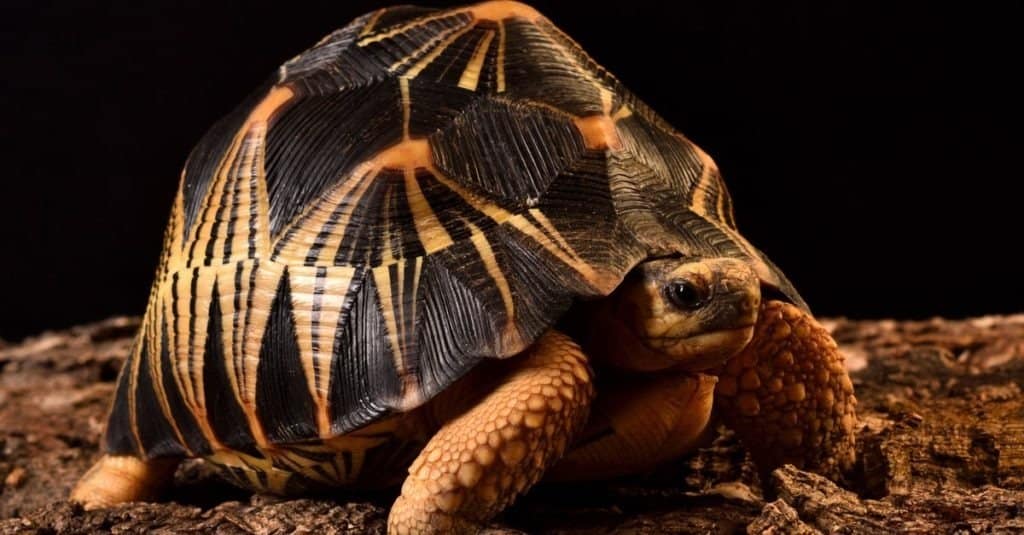
Weather can determine a turtle’s sex and also the color of its shell.
©Tobias Hauke/Shutterstock.com
One of the most unusual tortoise facts is that weather plays an important role in determining the life a tortoise will have. First of all, the weather actually determines a tortoise’s gender. When a tortoise is in its egg, its gender is not yet set. The type can then influence whether the tortoise will be born male or female. If the weather is cold, the egg is more likely to turn out male. Alternatively, if the weather is warm, the egg is more likely to come out female.
Similarly, the weather also influences the color of a tortoise’s shell. Typically, tortoises that live in hot, sunny climates tend to have lighter-colored shells. Meanwhile, tortoises that live in colder, darker climates usually have darker-colored shells.
1. Tortoises Are Quite Intelligent
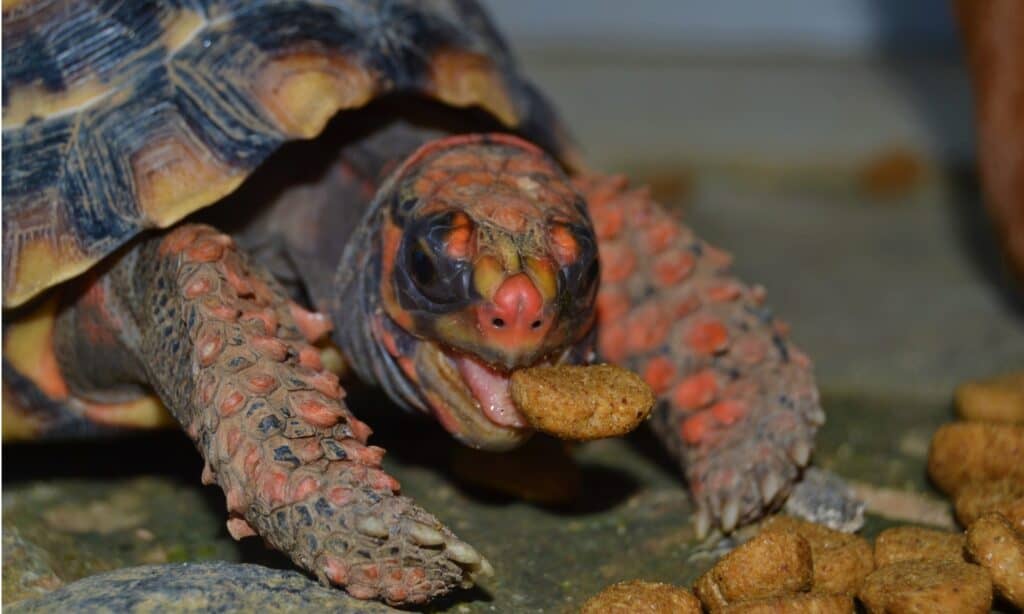
Tortoises are much more intelligent than they seem.
©iStock.com/Markus Frenzel
People often think of tortoises and other reptiles as rather stupid. In reality, tortoises are much more intelligent than we think.
Scientists have tested the intelligence of tortoises by placing them in mazes with the goal of finding food at the end. In one study, a tortoise navigated a maze and its performance was compared to a laboratory rat. Not only did the tortoise find the food more effectively than the rat, but it also excelled at not revisiting the same area twice.
Some evidence suggests that tortoises are also able to recognize faces. Tortoises also appear to prefer certain types of faces, all of which may point to their powers of perception and recall.
The photo featured at the top of this post is © Jan Bures/Shutterstock.com
Thank you for reading! Have some feedback for us? Contact the AZ Animals editorial team.




